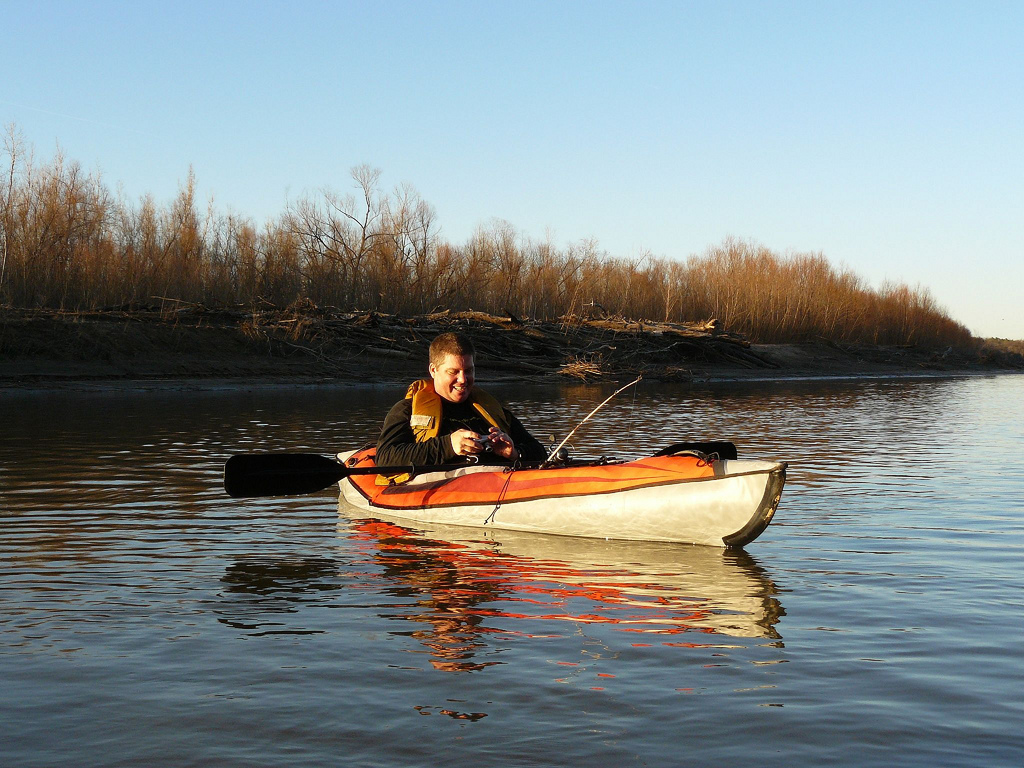There are a number of ways to experience the fishing, be it on a dock or bank or in some sort of watercraft. Not only can kayaking be one of the best ways to fish, there are kayaks which are made to be the most ideal for this activity. Kayaks, compared to other watercrafts, have a low center of gravity, which makes it more stable, and a low profile which will allow you to move quickly but unobtrusively through the water. Not only this, the kayak is extremely versatile. Wherever you may want to go fishing, be it in a small pond with small game or offshore for big game, the kayak is suited for anyplace.
One of the first things you may want to do if you are somewhat unfamiliar with fishing in a kayak, is to first do some research to learn about the sport. Find out what experienced fishermen say about their experiences fishing in a kayak, and if they have any tips or advice. You can also find kayak fishing clubs, discussion forums, and even kayak fishing guide services. Utilizing the information you have available will help you to envision yourself in the right kayak and be even more equipped and motivated to start the process.
Before you start you may still want to ask yourself where you will be spending most of your time fishing, be it be it salt water, a river, or a lake, or perhaps in a variety of places. How much gear will you likely be taking with you? You may also want to consider what species you will be targeting and how far out you will need to travel to reach them. Having a few ideas in mind helps you to trim off any kayaks which won’t suit your purposes and get a more specific idea in mind.
Many people don’t consider pedal-powered kayaks when it comes to fishing, but there are some advantages. The biggest benefit to a pedal-powered kayak is that it allows you to travel greater distances, perhaps at sea or in a large lake to reach different species, without becoming too tired. If something goes wrong with the pedal drive system you can still carry a padel with you, and perhaps alternate between using the pedal and the padel. Of course, a pedal-powered kayak is going to be a little more expensive.
If you have to travel some distance to reach your destination, consider a kayak with a longer waterline length. The longer they are, the faster they will be. A 16-foot kayak will surely be much faster than a 12-foot kayak. Keep this in mind, as traveling a long distance in a slower kayak won’t be the most effective route. If you have a good hull and a long waterline length, the more space you can cover in a faster time. Longer kayaks also stay on course better.
That is not to say a short kayak doesn’t have its merits. In fact, short kayaks have a lot to offer too in ways which long, narrow kayaks may not. You will have to make your decision based off of which benefits outweigh the costs for your individual situation. If you aren’t traveling very far then speed won’t likely be much of a concern, and if that is the case, a shorter kayak is a much wiser buy. Shorter kayaks are easier to manage and load, but there are other benefits as well. A shorter kayak is more maneuverable and better suited if you are fighting a fish, if you are among whitewater, narrow creeks, or in the mangroves. Anywhere there are obstructions and you will want more control and manageability, a shorter kayak is better suited.
When a kayak is wider it is also easier to fish out of. One of the largest advantages of a sort kayak is that it is wider and therefor more stable, which is very beneficial when casting a line or fighting a fish. It also gives you more room to move around so that you can access your fishing gear with much greater ease and accessibility.
Whether you choose a sit-in or sit-on-top kayak also depends majorly on your individual fishing style and locations. Sit-in, also called “cockpit style” kayaks are very well suited for strong waves, windy conditions, and cold water. Sit-in kayaks offer a storage compartment which can be used for gear, which is quite useful, and they are more stable compared to a sit-on-top kayak. Sit-on-top kayaks offer a better vantage point, and make it easy to get out of the kayak and wade if you need to. They aren’t good in rough conditions, but sit-on-top kayaks are great for getting on and off fast and effortlessly.
What many people don’t realize is that even color can play a role in a good fishing kayak. Color should also be considered when it comes to your safety—if you are fishing someplace where there are a lot of big powerboats, it is best to have a color they will notice easily like yellow or orange. However, if you want the added advantage of camouflage, and you are in a secluded area, green or tan can be much more effective.
There are a lot of different kinds of kayaks that are very well suited for fishing. Most of it depends on you as a fishermen and what your particular needs may be. Do you want stability or speed? Do you need something that will definitely protect you from the elements or something that is more accessible? With most kayak features, there are setbacks and benefits suited for more specific purposes. Once you have identified those purposes which you are facing, you can then choose the right fishing kayak perfectly tailored to you.
